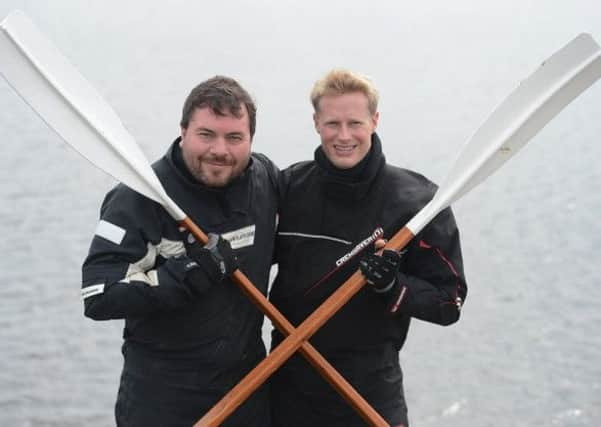Arctic adventure for Scottish rowing pair


Leven Brown, 42, from the Borders and Jamie Douglas-Hamilton, 32, from Edinburgh, returned earlier this week from their gruelling journey as part of a seven-person crew.
The voyage saw them break the record for the fastest ever crossing of the Indian Ocean in a rowing boat, as well as achieving the longest rowing record.
Advertisement
Hide AdAdvertisement
Hide AdThe team set out from Geraldton, south-west Australia, on 11 June and covered more than 4,200 miles to the Seychelles, arriving on 7 August.
Their journey included: being capsized and pushed off course in severe storms; the loss of crucial equipment; a collision with a blue whale; fending off Somali pirates; and the evacuation of an injured crewman in a dramatic mid-ocean rescue which almost saw the boat crushed under a cargo ship.
The expedition had been in support of the Save the Elephants charity, founded by Mr Douglas-Hamilton’s cousin, Iain Douglas-Hamilton.
Despite their arduous journey, the two men now plan to take on the Northwest Passage, one of the world’s toughest sea routes.
Mr Douglas-Hamilton said: “The Northwest Passage is absolutely fascinating. It’s something that’s not been done before. We’re looking to go from the Arctic Circle in the east to the Arctic Circle in the west.
“It’s something that so many people have tried to do, so many sailors and explorers. There were the Franklin expeditions; it took Amundsen four years to cross. But we’re going to try to do it in one season.”
Sought after by explorers for centuries as a possible trade route, it was first navigated by Roald Amundsen between 1903 and 1906.
Until 2009, the Arctic pack ice prevented regular marine shipping throughout most of the year, but climate change has reduced the ice, and this Arctic shrinkage has made the waterways more navigable.
Advertisement
Hide AdAdvertisement
Hide AdMr Douglas-Hamilton said that the prospect of investigating the frozen landscape had a personal attraction for him.
He said: “It’s of particular interest to me because my grandfather on my mother’s side lived on Baffin Island [in the Arctic Circle] for three years. He was working with the Inuits there and he was the only white man that they had ever seen at the time. I think if he knew that we were going to do this, he would be very interested in it.”
The expedition is expected to help raise money to support the protection of polar bears.
Since arriving back in Scotland earlier this week, both men have been recovering from the rigours of their crossing. Mr Brown said that he had developed trench foot from having his feet submerged in water all the time, while the crew suffered from severe sea sickness, sunburn and significant weight loss,
Mr Brown, who skippered the boat, said: “It is a extremely tough sport, and I think every person alive loves to test themselves in some way. This is my little way of testing myself in this sort of environment which, outside your own little capsule, won’t support human life. It’s the nearest I’ll ever get to going into space.”
Mr Douglas-Hamilton said: “There is no better feeling than pushing yourself to the limit and seeing how far the human body can go. You get a real sense of achievement, that you’ve done something very special, but at the time it was very tough. The pain we had to endure, it was nothing I’d experienced.”